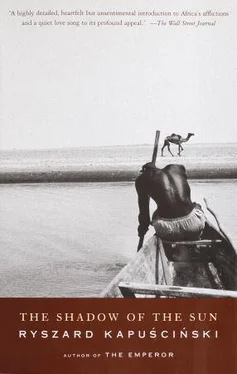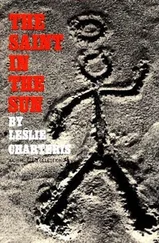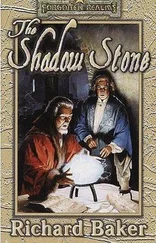Eritrea is two altitudes, two climates, two religions. In the highlands, where Asmara lies and where it is cooler, lives the Tigrinya ethnic group. The majority of the country’s inhabitants belong to it. The Tigrinya are Coptic Christians. The other part of Eritrea is the hot, semidesert lowlands — the shores of the Red Sea, between Sudan and Djibouti. Various pastoral people live there, professing Islam (Christianity seems to tolerate the tropics less well, while Islam takes to them). Massawa, the port and the city, belong to that latter world. These areas of the Red Sea around Massawa and Assab, and on the Gulf of Aden at Djibouti, Aden, and Berbera, are the hottest spots on the planet. As I stepped off the bus, I was struck by such heat that I could barely catch my breath. I felt that the flaming air all around would soon choke me, and I realized I had to find shelter quickly because in a moment I would collapse. I began to scrutinize the lifeless town, searching for some hint, some trace of life. Seeing no signs anywhere, in despair I simply started walking straight ahead. I knew I wouldn’t get far, but kept going, with great difficulty, lifting one leg, then the other, as if I were pulling them out of a bottomless, sucking quagmire. At long last I spotted a bar, its entrance shielded by a percale curtain. I parted the panels of fabric, walked in, and slumped on the nearest bench. My ears were buzzing; the heat seemed to be growing more intense, more abominable.
In the darkness, at the back of the empty bar, I noticed a dirt-encrusted, battered counter and two heads lying on it. From a distance, it appeared the heads had been severed, and left here by someone. Yes. That’s what must have happened, because the heads were not moving. They were showing no signs of life whatsoever. But I was in no condition to ponder who might have brought these heads here and why he would have left them. My attention was diverted by the sight of a crate of water bottles next to the counter. With what strength I had left I dragged myself over to them and began drinking, bottle after bottle. Only then did one of the heads open an eye, which proceeded to observe what I was doing. But the two barmaids still did not so much as twitch, motionless from the heat, like lizards.
Having water and a shady place, I now calmly waited for the fierce afternoon hours to pass. Later, I ventured out to search for some sort of a hotel. One could see that the wealthy districts of Massawa must once have been an enchanting mixture of tropical, Italianate-Arabic architecture. But now, several years after the war, most of the houses still lay in ruins, and the sidewalks were littered with bricks, garbage, and glass. In one of the city’s main intersections stood an enormous burned-out Russian T-72 tank. They clearly had no means of removing it. There wasn’t a crane in Eritrea capable of lifting it, no platform on which it could be transported, no forge that could melt it down. Indeed, you can bring a great tank like this into a country like Eritrea, you can fire away with it, but when it breaks down, or someone torches it, there is really nothing to be done with the wreckage.
In the Shade of a Tree, in Africa
It is already the end of the journey. All that remains now is a brief rest in the shade of a tree, on the way back home. The tree grows in a village called Adofo, which lies near the Blue Nile in the Ethiopian province of Wollega. It is an enormous mango tree, with thick, eternally green foliage. Whoever travels across Africa’s plateaux, through the immensity of the Sahel and the savannah, repeatedly sees a startling sight: on the great stretch of sandy, sun-burned ground, on plains covered with parched yellow grasses and sparsely growing, dry, thorny shrubs, there appears every now and then a single, solitary, magnificently branching tree. Its canopy is lush and vibrant, of so intense and saturated a color that it is visible from far away, a pronounced, vivid stain on the horizon. Its leaves, with no apparent trace of wind, move and shimmer. What is this tree doing here, in this dead, moonlike landscape? Why in this precise spot? Why only one? Where does it draw its juices from? Sometimes you will have to travel many kilometers before encountering another one like it.
Perhaps a great many trees used to grow here once, an entire forest that was cut down and burned, and only this one mango tree was left. Everyone from the surrounding area nurtures it, knowing how important it is that it live. A village lies near each one of these solitary trees. Indeed, spotting such a tree from far away, you can head with confidence in its direction, assured that you will find people there, some water, and maybe even something to eat. The tree was saved because without it these people could not live: in this kind of sun, man needs shade to survive, and the tree is that shade’s depository and source.
If there is a teacher in the village, the area under the tree serves as the schoolroom. Village children gather here in the mornings. There are no separate classes or age limits. Whoever wants to, comes. The teacher pins to the trunk a piece of paper with the alphabet printed upon it. He points to each letter with a stick, and the children look and repeat after him. They must learn it by heart — they have nothing to write on or with.
When noontime arrives and the sky turns white from the heat, whoever can do so takes shelter in the tree’s shade: children, adults, and if there are farm animals in the village, they come too — cows, sheep, goats. It is better to sit out the scorching hours under the tree than in one’s own clay house. The houses are cramped and airless, while beneath the tree it is roomy and there is more hope of a breeze.
The afternoons under the tree are very important: it’s when the older people gather for a conference. The mango tree is the only place to meet and talk, the village has no larger venue. People assemble eagerly and willingly, because Africans are collectivist by nature, and possess a great need to participate in everything that constitutes communal life. All decisions, such as who should get how much land to farm, are made collectively, and conflicts and disputes are jointly resolved. According to tradition, each resolution must be adopted unanimously. If someone has a differing opinion, the majority must persuade him to change his position. This can drag on endlessly, because the discussions are famously garrulous. If someone in the village is quarreling with someone else, then the court convened beneath the tree will not try to ascertain the truth, or where justice lies, but will set itself the sole task of ending the conflict and conciliating the warring sides, while granting to each that he is in the right.
When the day ends and darkness falls, the meeting is adjourned and everyone goes home. It is impossible to argue in the dark; discussion requires being able to see one’s interlocutor’s face, to determine whether his words and his eyes are saying the same thing.
Now women and the elderly gather beneath the tree, and children, who are curious about everything. If there is wood, a fire is built. If there is water and mint, a thick, aromatic tea is brewed. Now begins the most pleasant, their favorite, time of day: the retelling of the day’s events, stories that mix fact and fiction, the joyous and the frightening. What dark, savage thing was making such a racket in the bushes that morning? What was that strange bird that flew by overhead and suddenly vanished? The children drove a mole into its burrow. They dug up the burrow — the mole wasn’t there. What happened to it? As the stories unfold, people start to remember — that once, long ago, the old people used to tell of a strange bird that did indeed fly by and vanish. Someone else recalls that his grandfather used to tell of something dark that had long been making a noise in the bushes. How long ago? As far back as one can remember. Because here the outer reaches of memory are the limits of history. Earlier, there was nothing. Earlier does not exist. History is what is remembered.
Читать дальше












